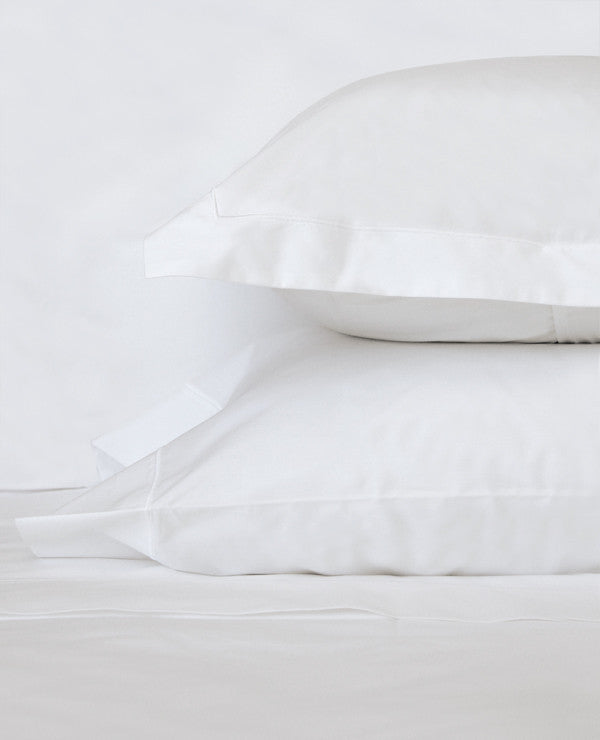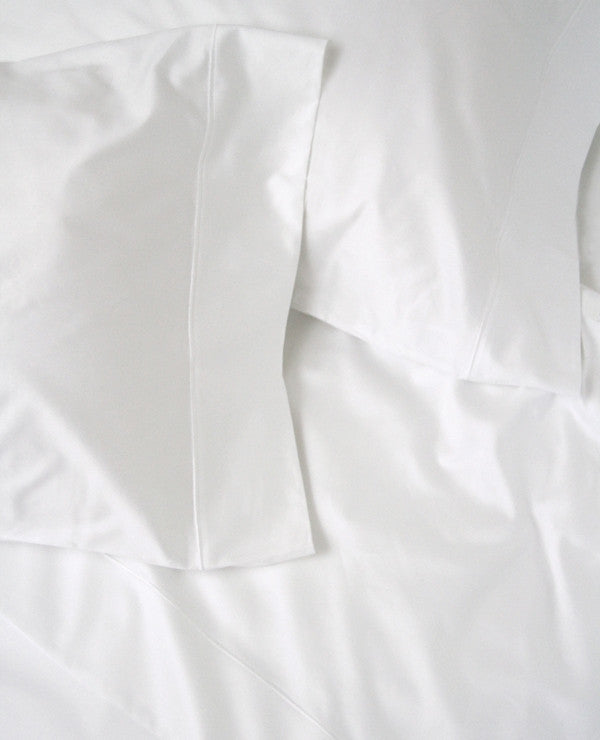
Q: Why do some linen companies NOT publish the thread count of their sheeting anymore?

A: Because they know that thread count is not the only indicator of quality. This misperception around thread count often leads to confusion regarding the true quality of the sheeting. While many consumers look to thread count when purchasing sheets, it is really only a small part of the equation and is only relevant given other factors of the fabric’s composition. What thread count won’t tell you is the quality of the fibers used to produce the yarns, how they are spun, woven or finished, and most importantly, how the fabric feels.
Having said that, we believe it’s EXTREMELY important to let you know the thread count of all our sheets!
Thread count is a personal preference. Some people like crisp sheets, which would be a lower thread count. Others prefer the silkiness of a higher thread count. We think you need to know what you’re buying. But you also need to know where the cotton is from and where the sheet is woven. We choose to give you more information, not less. We trust that you are intelligent enough to make your purchasing decision with all the facts

Thread count is a personal preference. Some people like crisp sheets, which might be a 220 thread count. Others prefer the silkiness of a higher thread count. We think you need to know what thread count you’re buying as much as you need to know where the cotton is from and where the sheet is woven. We choose to give you more information, not less, and trust that you are savvy enough to make your purchasing decision with all the facts. Here are some of those facts:
Fiber
Generally speaking, the finer the natural fibers, the better the fabric. The world’s finest cotton is grown on the banks of the Nile River in Egypt. Egyptian cotton is renowned because it yields one of the longest staple cottons in the world — the staple being the fine individual fibers. The longer the fibers, the more easily they can be spun into smoother, stronger, finer yarn or thread. Our mills in Italy use the very finest long-staple cotton that Egypt offers. But we still think you should also know what thread count you’re buying! That’s the fun part.
Finishing
After the fabric is woven, it goes through the complex process of “finishing.” This is an important step that determines the final texture, color, strength, stability, and softness of the fabric. The Italian mills that produce Au Lit linens consider fine finishing an art form and are careful to guard the exact process. This is another key component of an authentic quality sheet.
Feel
The most important factor in selecting a sheet is straightforward — how does it feel to you? Do you like the silky feeling of a cotton satin 320TC weave, or are you more partial to the crispness of a 220 TC percale? (Both cotton satin and percale weaves use the same cotton yarn; it’s the weave that differentiates them.) Technically speaking, thread count is simply the number of threads per square inch of fabric and on its own has little to do with quality. The texture and hand is created by a variety of factors; the staple size, weave, yarn type, finishing, and the thread count together make up the feel of a fabric. We want you to be aware of all of those factors.
Everyone’s taste in sheeting is different, so when considering what might be best, think about how you sleep and what really matters to you. Visit our thread count bar to choose your favourite!





